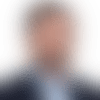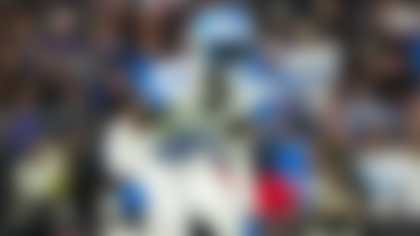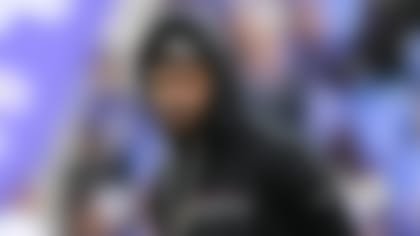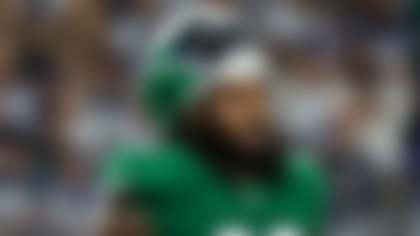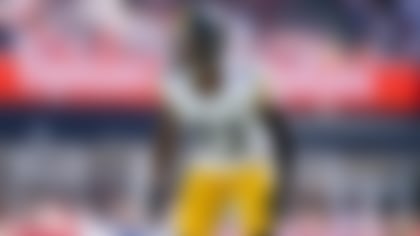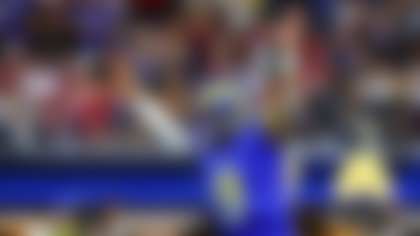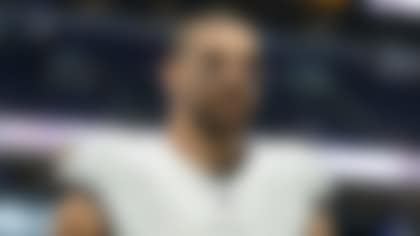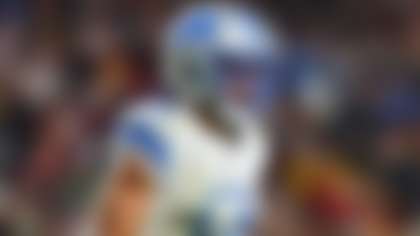Despite consternation among Green Bay fans during the Ted Thompson era about the lack of offseason moves, the Packers continue to dominate the NFC North. Since Aaron Rodgers took over as the starter in 2008, the Pack have missed the playoffs just once (that first season) and won the division five out of the past six seasons. As long as No. 12 sits on the throne in Lambeau, the NFC North road runs through Green Bay.
This offseason, however, has seen defections from the division champs strike deep.
In an attempt to topple the Packers, Detroit Lions general manager Bob Quinn swiped a key cog from Rodgers' fortified offensive line. Like Tyrion Lannister joining forces with Daenerys Targaryen in "Game of Thrones," the Lions' recruitment of guard T.J. Lang alleviates a flaw in Detroit while weakening a strength of the ruling regime. Quinn also added the top right tackle in the free-agent market in Ricky Wagner. Detroit's big-money offensive line makeover clued a clear goal: protect Matthew Stafford at any cost. After the Lions collapsed last season -- losing their final four games, including the playoff opener -- Quinn's offseason moves have Detroit pecking furiously at the heels of the Packers atop the division.
Last offseason, the Minnesota Vikings looked poised to hold divisional supremacy for a second straight year until injuries and the worst offensive line in football destroyed their season. After his efforts to revamp the blocking blew up in his face in 2016, Vikes GM Rick Spielman doubled down in 2017, signing tackles Riley Reiff and Mike Remmers. Neither is a Pro Bowl player. The Vikings still own a playoff-caliber defense, and quarterback Sam Bradford was not the problem in last year's 8-8 disappointment. However, if the O-line signings don't work out better this time around, Spielman could be looking for work a year from now.
John Fox believes the Bears are "in striking distance" of winning, but there are still many holes to fill. The biggest question mark is how much an upgrade -- if any -- Mike Glennon might be under center, as compared to the Jay Cutler/Brian Hoyer/Matt Barkley trio of 2016. With Alshon Jeffery departing, Glennon doesn't have a No. 1 target to rely on, which could lead to an inefficient passing offense -- something that plagued the QB in Tampa. (Sidebar: Expect running back Jordan Howard's share of the offense to be through the roof.) Even with additions of Prince Amukamara and Quintin Demps in the secondary, Chicago remains a roster wanting for playmakers on defense and will struggle to leap the more complete rosters within the NFC North.
Despite Green Bay losing key players like Lang, Julius Peppers, Micah Hyde, JC Tretter, Eddie Lacy and Jared Cook, it's foolhardy to predict in April that the Packers will relinquish their throne. With the best quarterback in the division and a glut of pass-game playmakers still in town, it's Rodgers' crown until someone forcefully swipes it off his head.
FREE AGENCY NOTABLES
BIGGEST ADDITION: Martellus Bennett, tight end.
Old team:New England Patriots. New team:Green Bay Packers.
Bennett brings both name and game to Green Bay. He's an upgrade over Jared Cook, who left Green Bay for the Raiders. Since 2012 (when he left Jason Witten's shadow in Dallas), Bennett has notched no fewer than 53 receptions in each season (with a high of 90 in 2014). Cook, meanwhile, hasn't eclipsed 52 catches once in his eight-year pro career. Bennett is a willing blocker and dynamic pass catcher who should thrive underneath in Green Bay's offense. As he builds his rapport with Aaron Rodgers, Bennett should find himself the beneficiary of the quarterback's scramble drills. Bennett is also a massive upgrade in the red zone, where he will benefit from the attention paid to Jordy Nelson and Randall Cobb. With Bennett, Rodgers has more weapons at his disposal than any other QB in the division.
BIGGEST LOSS: T.J. Lang, offensive guard.
Old team:Green Bay Packers. New team:Detroit Lions.
Maybe Alshon Jeffery's defection from the Bears was the biggest name loss, but let's be honest: Chicago didn't do much winning with the big-play receiver.
Lang moving from Green Bay to Detroit will have a bigger impact on the division. The Lions upgraded their interior protection for Matthew Stafford with one of the best pass-blocking guards in the NFL while simultaneously creating a massive hole in front of Aaron Rodgers.
Lang's exit makes it two straight seasons the Packers lost a Pro Bowl guard (they released Josh Sitton in 2016). Unlike last season, though, Green Bay doesn't have an obvious replacement. Mike McCarthy nixed the idea ofBryan Bulaga or Jason Spriggs moving inside, which leaves an uninspiring competition between veteran backup Don Barclay, 2016 sixth-round pick Kyle Murphy and undrafted practice squad member Lucas Patrick (as well as any draft selection).
The quickest way to destroy a quarterback is rushing up the gut. If the Packers can't sufficiently replace Lang, Rodgers will see defensive tackles and A-gap blitzers (hello, Mike Zimmer) in his face all season.
SLEEPER ADDITION: Datone Jones, defensive end.
Old team:Green Bay Packers. New team:Minnesota Vikings.
What, exactly, is a sleeper? A player no one expects to do much, but who makes a surprising impact on the field, right? (Ignoring that, by labeling a person a "sleeper," you are, in reality, negating part of said sleeper-ness.)
On paper, Jones is buried behind several defensive linemen -- Everson Griffen, Brian Robison, Danielle Hunter, Linval Joseph, etc. -- making him a redundant factor obscured on the depth chart. However, Mike Zimmer always seems to wring the most out of his front-line defenders. Jones' penetrating ability aligns well with the Vikings' scheme. The 26-year-old has the potential to shift inside in passing situations and wreak havoc up the gut -- very key, especially if Sharrif Floyd's knee issue abruptly ends his career.
WHAT'S NEXT?
Chicago Bears: While the Bears upgraded the defense by addressing the secondary in free agency, another young edge rusher, safety and linebacker are necessary to acquire through the draft. A wide receiver corps chock-full of second-fiddles could use a big-play weapon (something the Bears have been counting on Kevin White to morph into over the past two years). Despite the $19 million guaranteed to Mike Glennon, GM Ryan Pace would be wise to continue adding talent at quarterback. This team needs a long-term solution at the position, whether it's going to be Glennon or someone else.
Detroit Lions: The Lions own perhaps the worst linebacking unit in the NFL. Free-agent acquisition Paul Worrilow is more snap-eater than playmaker. Finding a linebacker who can cover tight ends and running backs in space is a must in the draft. The Lions should also add an edge rusher to pair with Ziggy Ansah. No. 3 receiver and power back are also areas Bob Quinn could tend to in the middle rounds of the draft. Detroit will look to extend Matthew Stafford's contract later this summer, which might make him the highest-paid quarterback in the NFL -- however briefly that label lasts.
Green Bay Packers: We covered the need for adding a right guard above. Finding a pass rusher to replace Julius Peppers, who floated back home to Carolina, is a massive need. A mid-round power back to pair with Ty Montgomery should also be on the docket. Adrian Peterson has been ponderously linked to the Packers, but the scheme (Green Bay ran 701 regular-season snaps out of the shotgun in 2016) isn't a great fit. Unless it's at a steep, steep discount, Peterson and the Packers don't seem like a likely marriage.
Minnesota Vikings: What's next? Daily prayers that this offseason's offensive line additions go exponentially better than last season's? Getting anything from last year's No. 1 pick, Laquon Treadwell, would be a good start. Adding another young running back from a deep RB draft class to pair with Latavius Murray and Jerick McKinnon should happen later this month. Right guard also sits as a glaring weakness on a still-suspect offensive line.
